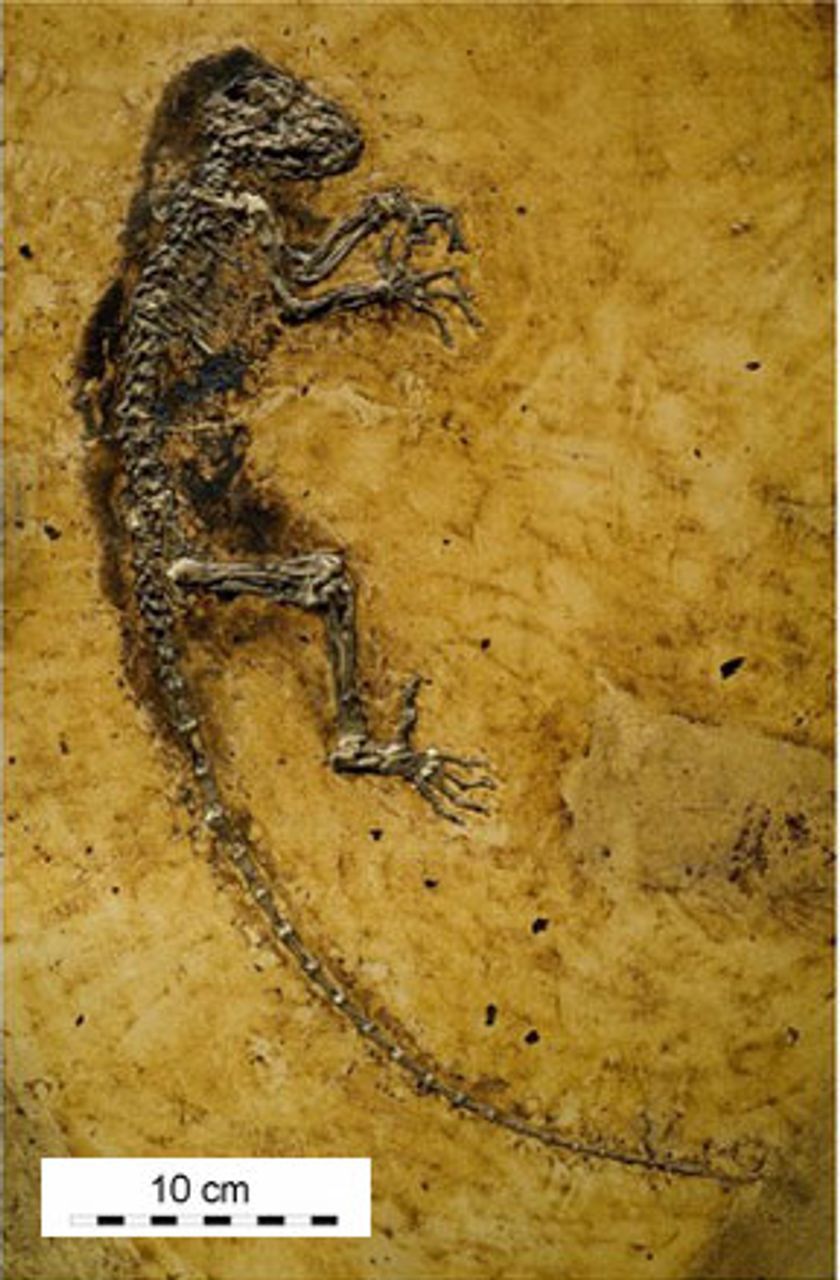How silly of me... anyway, yeah. The Messel Shales are one of those incredible palaeontology discoveries that crop up a lot in recent fossil finds. Messel is of particular interest to moi as it is well known for its well preserved bat fossils.
The Messel Shales are located in Germany, and palaeontologists believe it was once a deep lake with a lack of oxygen at the bottom. This meant it did not contain the normal bacteria for decomposition as other lakes, resulting in beautifully preserved fossils. Examples include an ancestor of the woodpecker with detailed tail feathers and insects still retaining their original colour pigments. There have been many discoveries of bat fossils here, most with their wings folded back as if they were diving or falling out of mid-air.
This is my own replica fossil bat, Palaeochiropteryx tupaiodon. The original is shown above.
I did some calculations of wing morphology for my replica as part of my EPQ, and my findings showed it to have wings typical of insectivorous bats. This suggests it was a slow flyer which hunted close to the forest floor, with slow flight but high manoeuvrability in midair. This low flight speed may have made it particularly vulnerable to the poisonous gases from the lake (explained below).
Analysis of the geology of the lake has helped to understand why the fossil bats looked this way. It has been suggested that if carbon dioxide accumulated in the oxygen deficient water at the bottom and was then mixed with the normal water above, a large volume of poisonous gas would suddenly be released. This occurred at Lake Nyos in Cameroon, 1986, when carbon dioxide was released from the lake and killed over 1700 people. The similarities in the geology of the two lakes have lead scientists to believe Messel was similar, especially the presence of siderite at both (which is thought to indicate the presence of carbon-dioxide in lakes). Also, 50 million years ago the Messel Shales were situated on top of an active fault line, which suggests a cause for the mixing of the two types of water.
More fossils!

Jewelled wing beetle. The preservation of coloured pigments in fossils is really really rare.

Ida! (I hope you've all heard of this one, it got a lot of media attention). This is presumed to be representative of one of the missing links in the early evolution of primates.

Frogs.


Leptictidium, as featured on BBCs Walking With Beasts (I may talk about this more in a later post... essentially, this programme was one of the things that got me interested in palaeontology when I was little. Also, Mesozoic fauna gets too much attention! Cenozoic animals are interesting too!)
The BBC programme featured the Messel fauna in its first episode, focusing on the Eocene. This period of the Earth's history occurred after the extinction of the dinosaurs, and is the time when the major mammal groups diversified. At this time, the apex predators were things like Gastornis, below:

...and also Ambulocetus:

Believe it or not, this is one of the early ancestors of cetaceans like whales and dolphins. Mesonychids (hoofed predators) such as Andrewsarchus (the largest land predator to exist... I may blog about it later, its awesome) are also theorised to be related to them...
Messel also had giant ants, 5.5cm long.

Its funny that pretty much everything in this post could be the subject of its own separate, much longer blog post!
... why am I posting this? I really have no idea. Hope you found it vaguely interesting.
Even if the
morrow is barren of promises, nothing shall forestall my return...
Becky x

















